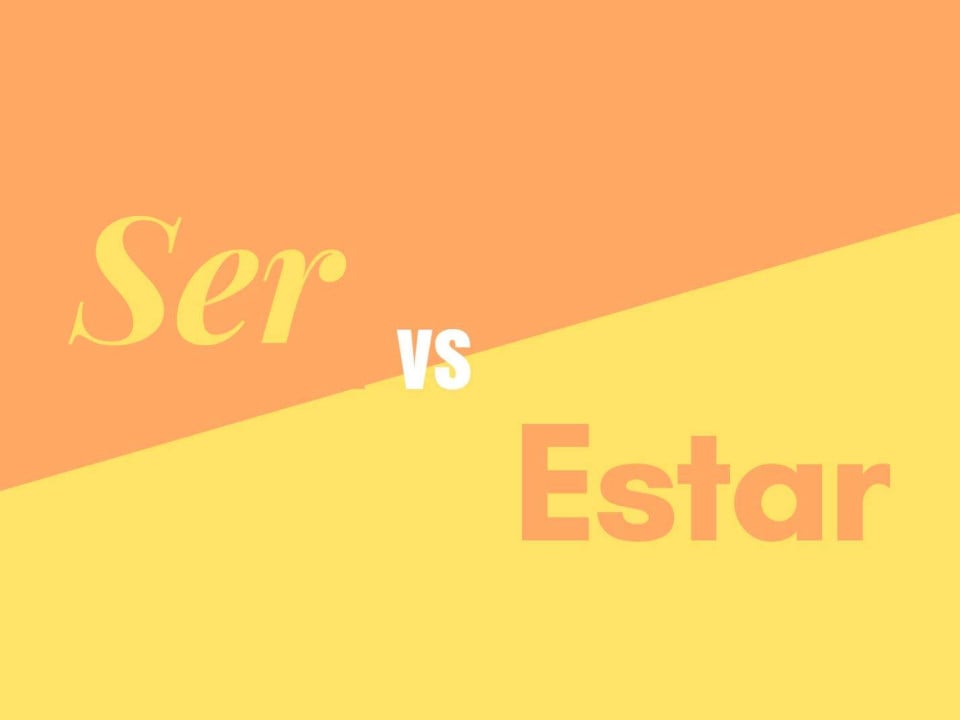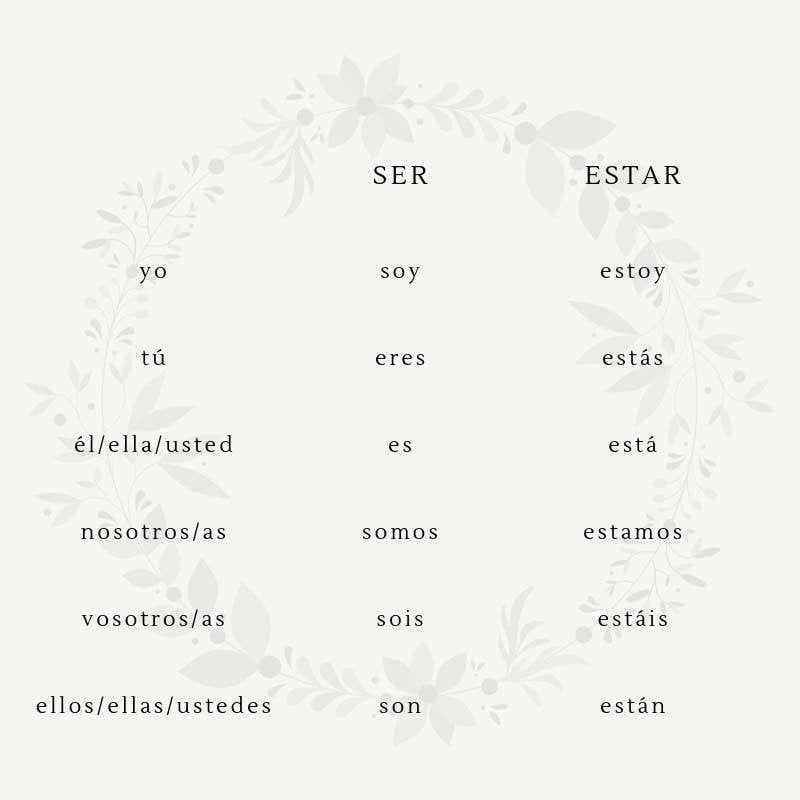For many English speakers, learning all the conjugations of Spanish can be difficult enough. Once you get into choosing between the two versions of “to be”, you feel like you could almost give up. But don’t despair! As soon as your “ah-ha” moment arrives, you’ll just have to worry about putting it into practice. Even people who have been studying Spanish or living in a Spanish-speaking country for a long time can get mixed up and make these mistakes. Read on to see how to correctly use ser and estar.

Conjugations of ser and estar
The following image shows the conjugations of both verbs:

When do you use ser?
Ser is used for permanent or long-term descriptions. We use it in cases like:
nationality
soy Española (I’m Spanish), soy de Suecia (I’m from Sweden)profession
soy cantante (I’m a singer)physical traits
él es pelirrojo (he is a redhead), somos altos (we are tall)religion
mi familia es católica (my family is Catholic)shape and size
es cuadrado (it’s square), es pequeño (it’s small)material
es de lana (it’s made of wool)possession
es tuyo/es de María (it’s yours/it’s Maria’s)time and day
son las 5 de la mañana (it’s 5 in the morning)
As you can see, ser is most used with things we can describe as permanent. The exception to this is time and day because they’re always changing, however, we still use ser.
When do you use estar?
We use estar for temporary circumstances or situations.
emotions
está muy contenta hoy (she is very happy today)temporary conditions
nuestro coche está roto (our car is broken)location
estoy en el parque (I’m in the park)
Some examples of ser and estar in use
La camiseta es azul y es de algodón. (The t-shirt is blue and made of cotton.)
Here, we use ser in both cases of the t-shirt’s description because they will not change; the shirt will not suddenly turn orange, nor will it become a different material.
Marina es alta e intelligente. (Marina is tall and intelligent.)
We use ser to describe Marina because she will always be tall and her intelligence will remain the same, it is a permanent description.
Los pantalones son grises y están sucios. (The pants are grey and they are dirty.) We use ser to describe the colour of the pants – which does not change – and estar to describe the condition of the pants – they are dirty now, but when they’re washed, they will be clean.
Tus padres son buenos amfitriones cuando están en casa. (Your parents are good hosts when they’re at home.) We use ser to indicate that your parents are always good hosts and estar to indicate location.
Things to watch out for with ser and estar
In some cases, the choice of either ser or estar will completely change the meaning of a sentence.
Remember, ser is used to communicate permanence, so using ser in a description means it is something immutable (it cannot change), or it is part of that thing or person.
Using estar implies the description of a temporary condition.
There are some common adjectives that change meaning drastically depending on whether ser or estar is used. It may be useful to memorize them. Here are some examples:
ser aburrido: to be boring. Because we use ser which indicates permanence, it means that the person is always boring; sadly, it is part of their character.
estar aburrido: to be bored. Estar indicates temporary situations or feelings, so the feeling of boredom will eventually pass.
ser bueno: to be a good person, or that something is good quality, or useful for something. Again, the use of ser indicates permanence and something that constitutes this quality. For example: Comer verduras es bueno. (Eating vegetables is healthy.)
estar bueno: to be attractive, healthy, or in the case of food- tasty.
Example: El pollo está muy bueno. (The chicken is really good.) In this case, we use estar because we are specifically describing the chicken we are eating. If you were to say El pollo es bueno, you would be saying that ALL chicken is good or delicious.
Here are some more examples of adjectives that change meaning depending on whether ser or estar are used:
ser malo: to be a bad person with bad intentions, of bad quality, or unhealthy.
estar malo: in bad condition, in the case of food- tastes bad.ser rico: to have a lot of money
estar rico: to be tastyser listo – to be smart
estar listo – to be prepared for somethingser vivo – to be vivacious
estar vivo – to be aliveser orgulloso – to be arrogant
estar orgulloso – to be proud of a certain achievement
We hope this has cleared some qualms you may have been experiencing with trying to decide between ser and estar. To check your understanding, how would you translate “I am very mad at you for eating the last piece of cake!” If you’re interested in furthering your Spanish education, check out our Spanish classes in the heart of Barcelona.
Posted in Learn Spanish
Learn and improve your Spanish in Barcelona, one of the world's most vibrant and exciting cities.
Here at Speakeasy you'll find courses for all abilities and timetables, an incredible team of talented and motivated teachers and classmates to share your interests and passions. And if you need a visa for your stay, then of course we're able to help and advise.

Start your learning Spanish in Barcelona adventure
Let us know if you have any questions about our courses, our school and life at Speakeasy.